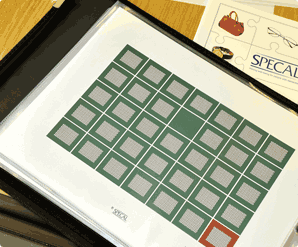Dementia is often described as an awful disease, both for the person with the condition and his/her loved ones. While it may currently be incurable, the Contented Dementia Trust believe that wellbeing can be maintained with the right approach to the person and management of the symptoms. This is such good news for those living with the disease and their loved ones I have to share it in this article.
My Dad was first diagnosed with dementia many years ago, and during his slow decline I was constantly at a loss over how to interact with him. Should I pretend nothing was wrong and cajole him to take decisions in the hope that this would reassure him; should I fight the decline and correct his confusion; should I treat him like a child and take decisions on his behalf? I never had the right answers and I never felt satisfied I was doing the best I could. I read about the disease, mainly the physiological effects: the death of brain cells and with them memory, personality and life. I never imagined there was a small charity, the Contented Dementia Trust, not 50 miles from my Dad’s house, that has pioneered and published a coherent model for understanding the disease and managing it that puts the person and their wellbeing at the forefront of the approach.
Hundreds of miles away I recently attended a course run by the Contented Dementia Trust which gave me an understanding of the person and not the disease. The foundation of their approach is a model of how memory works that is so easy to understand and useful in explaining behaviour of the person with dementia that it was a revelation. This model is called “The SPECAL® Photograph Album”, and during the course, and in the charity’s booklet, this model is explained visually, which makes it very clear.

In brief it uses the analogy of a photograph album to represent how memories are stored, with photographs as individual memories. Memories are stored unconsciously a split second after each of our experiences in life. Each memory has facts (the photo) and feelings (the frame), the album is constantly added to and referred to in daily life. With the onset of dementia some memories are stored incorrectly, the facts of events are lost, only the feelings are captured – picture frames without a photo. Over time this random failure becomes more frequent until consecutive blanks (frames without photos) lead to significant loss of factual information. As the disease progresses fewer and fewer new facts are stored although feelings continue to store all the time. The model also says that reasoning is maintained, but with so few recent facts to work on, behaviours may appear odd.
For example, ‘Peter’, sitting in a chair, may decide that he would like to move to another chair. He stands up. Once he is standing, he checks his album of memories to recall what he is doing, only to find that he has no facts about how he came to be standing up. He assesses his situation: ‘I am standing by a chair…. I might as well sit down.’ Moments later he stands up again, but again he has lost his purpose, which relies on having the facts. This cycle of standing up and sitting down is repeated. All the while Peter is likely to be calm and unaware of the cycles, content from one moment to the next.
The goal of the Contented Dementia approach is to maintain a positive or neutral -a contented- feeling for those living with dementia. They believe that this depends on the actions and reactions of those around them, so a key aim of the charity is to help carers learn new skills based on an understanding of the charity’s memory model, the SPECAL Photograph Album, and encapsulated in their Three Golden Rules for maintaining the wellbeing of the person living with dementia:
- Do not ask questions
- Listen to the expert – the person with the condition
- Do not contradict
These are their rules of thumb that apply to interacting with anyone with dementia. From these an individualised SPECAL Care Profile is then developed by the family using the person’s life story and care needs. The profile covers everything from consent, ensuring carers do not burn out, inclusion of formal health and social care and even planning for future changes in care needs and how these should be managed, through to the end of life.
A product of the SPECAL Profile is a concise working summary of key information, known as the SPECAL Passport, which includes the most acceptable answer to the most frequently asked questions. Once created it is shared with all those who come into contact with the person to ensure consistency, and thereby promote a sustainable sense of contentment for them. A key part of the approach is the belief that feelings are more important than facts.
I discussed the SPECAL approach with a GP friend. Medical thinking is to always try to bring the person back to reality rather than accepting their view or illusion. One reason for sticking with reality is that there will be more consistency to responses, which will be less confusing. There is also some debate about how proscriptive the Golden Rules are in still allowing the person with dementia control or influence over their care. The balance between informed consent and not asking questions or contradicting is a fine one, especially when end of life choices are being considered.
It struck me that for cancer sufferers, the hospice / palliative care movement takes a similar person-centred approach to that of the Contented Dementia Trust. No-one believes medicine should be withheld in order to make clear the reality of the pain caused by incurable disease, so much so that it restricts any other activity; this would be a humiliating and hopeless approach. For the terminally ill, pain-relief is given so that what is left of life can be lived.
An example of listening to the person and their feelings was given in the case of ‘Dolly’ who constantly asks after her children, wishing they would visit more often.
It is Dolly’s birthday, her family have visited her and celebrated with her, bringing a card and cake. Shortly after they have left, Dolly repeats her hope that her family would come and see her.
Is the best approach to contradict what Dolly is saying, and keep reminding her that her children have just visited – something that Dolly clearly has no recollection of? Or is it better to listen to Dolly ‘as the expert’, agree that it would be good see more of her children and gently steer the conversation to one of Dolly’s favourite stories about her family?
By putting the wellbeing of the person at the centre of the approach to dementia, loved ones and carers may have to accept repetition and engage with illusion, but if this offers relief from distress for the person living with dementia I think it compelling that we consider the ethics of the approach.
All of us on the course found the SPECAL Photograph Album model of how the memory works and how dementia affects memory extremely useful and it explained the overall approach. There was no time to explore the profile or passport building process, but the practical utility of a SPECAL Passport resonated strongly across the experience of the group. If you care for someone with dementia I’d recommend you explore this or another method to help make sense of how the disease affects the person and how you can help them live the best life possible as it progresses.
As always please let me know what you think about the content of this article on a caring approach for dementia, and Alzheimer’s, either below in the comments or directly via the contact page. Have you found a different approach to caring or have you experience of the SPECAL method? Please let me know.
SPECAL stands for “Specialised Early Care for Alzheimer’s” and is a trade-marked approach.
Images used with permission
